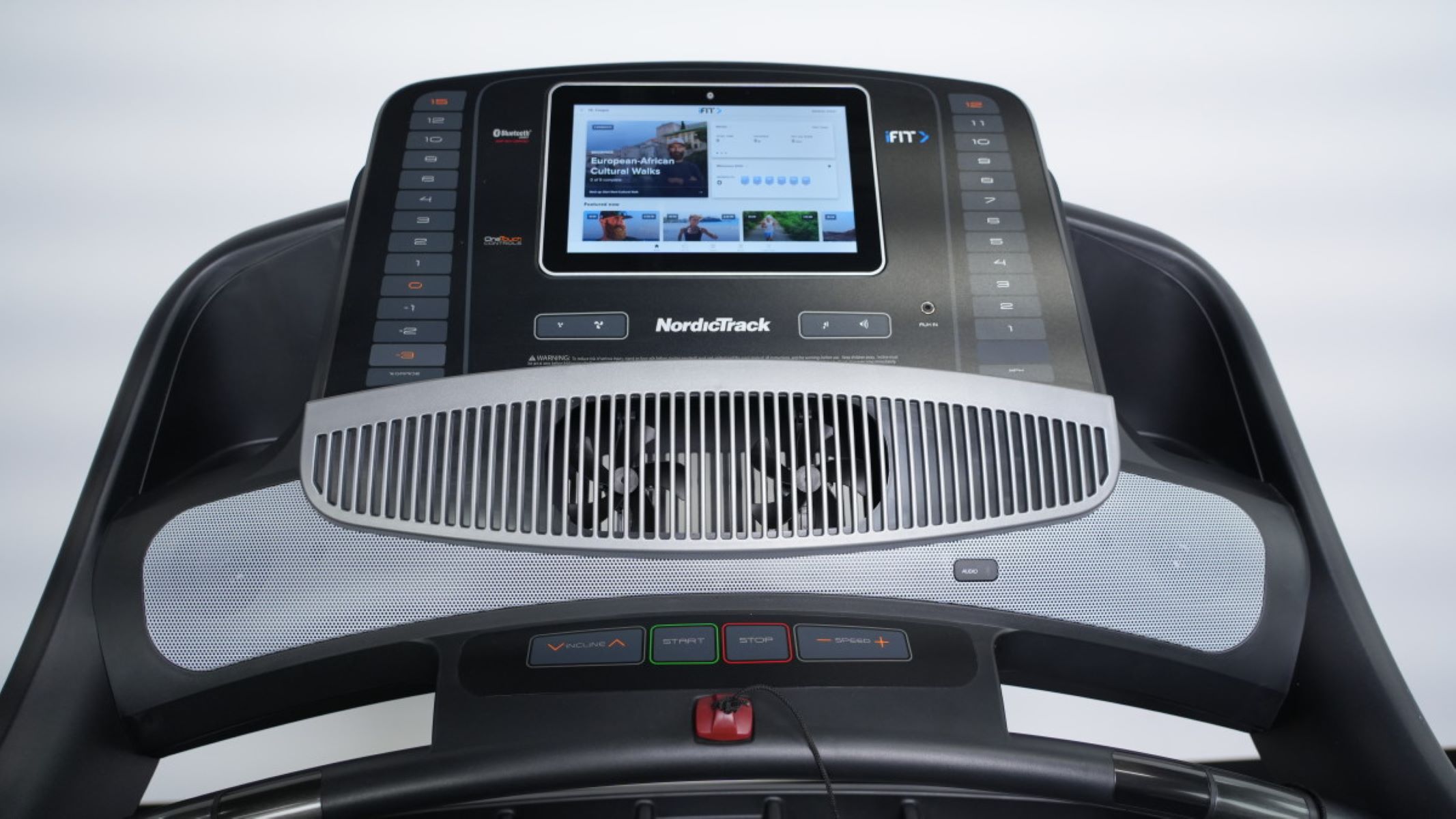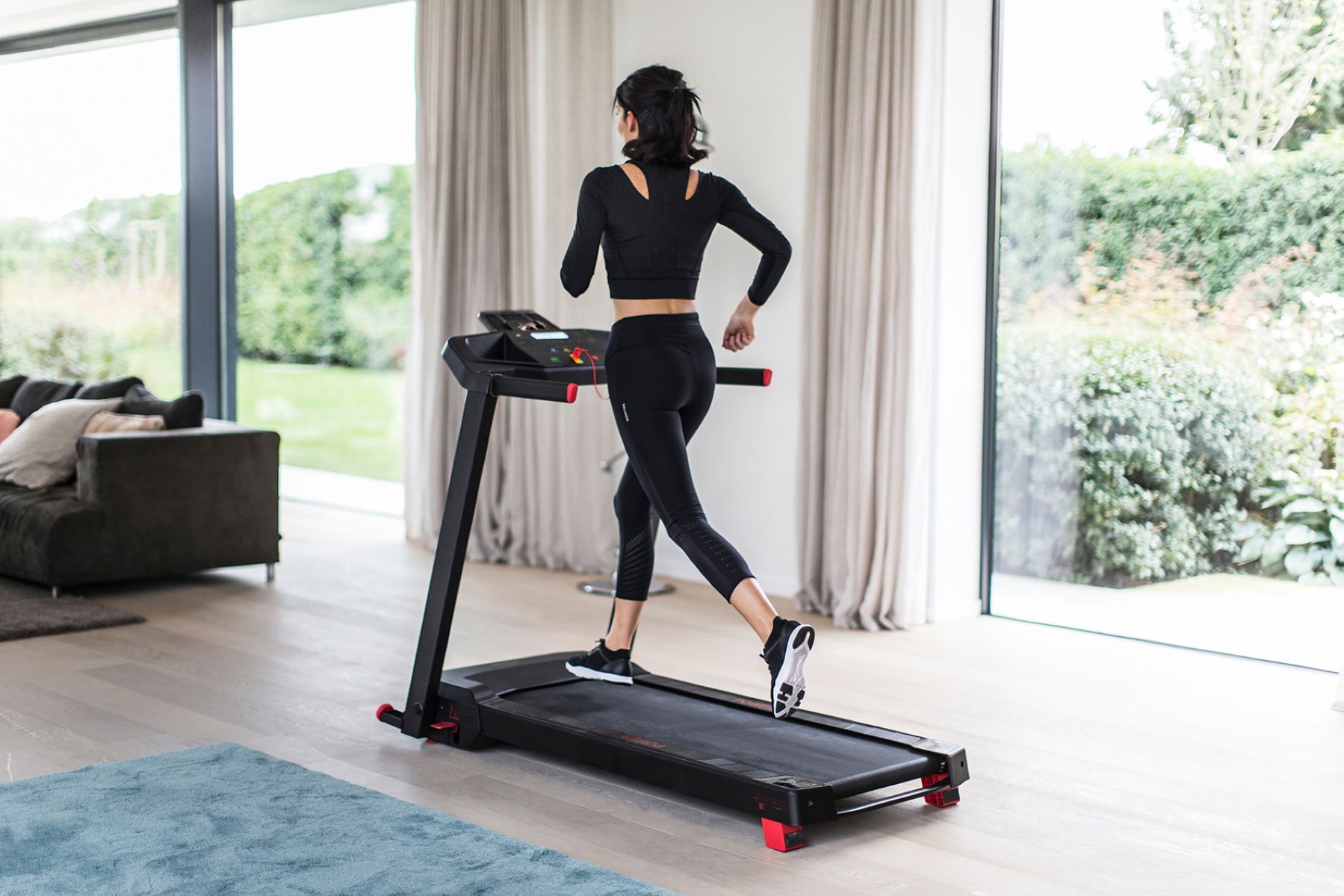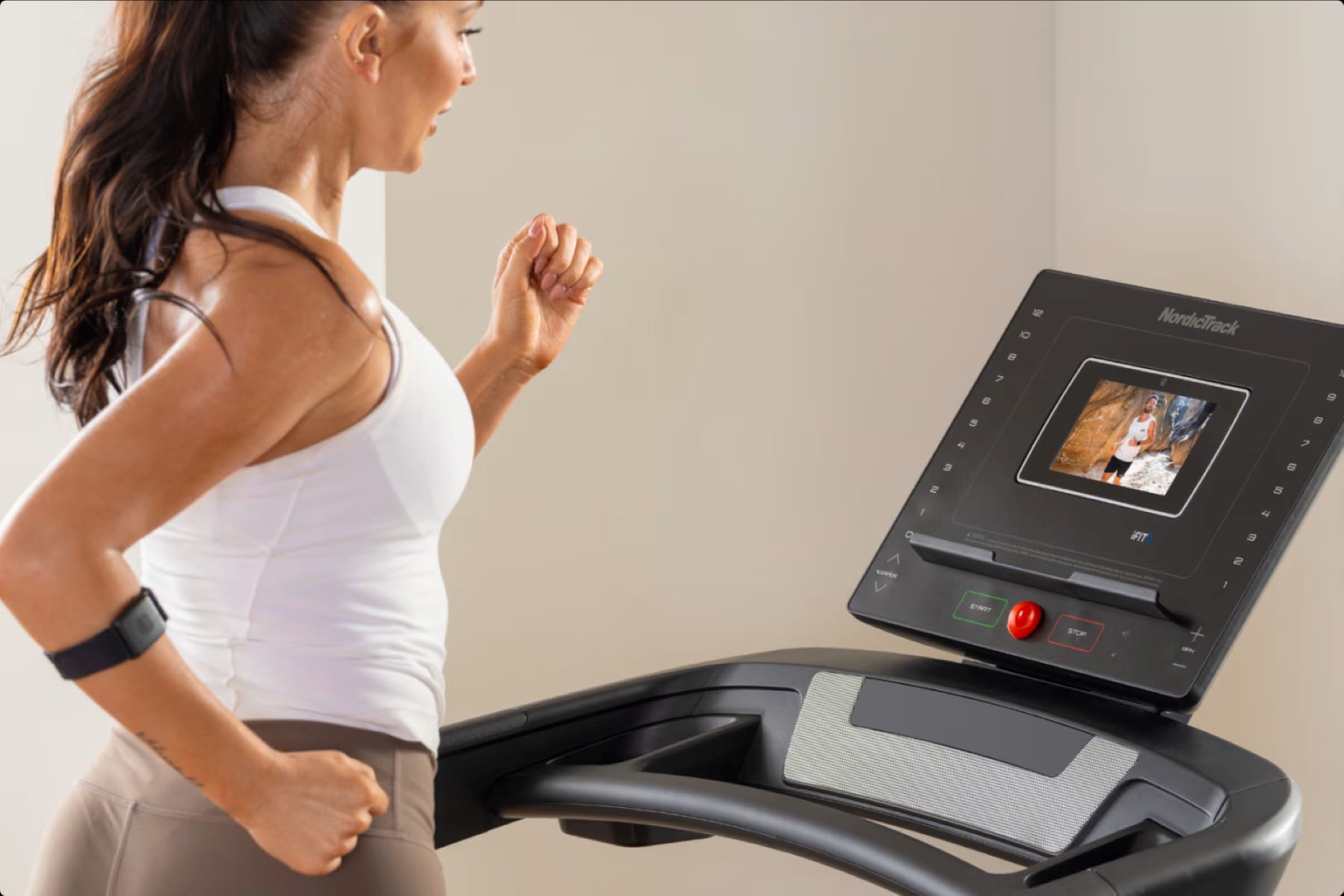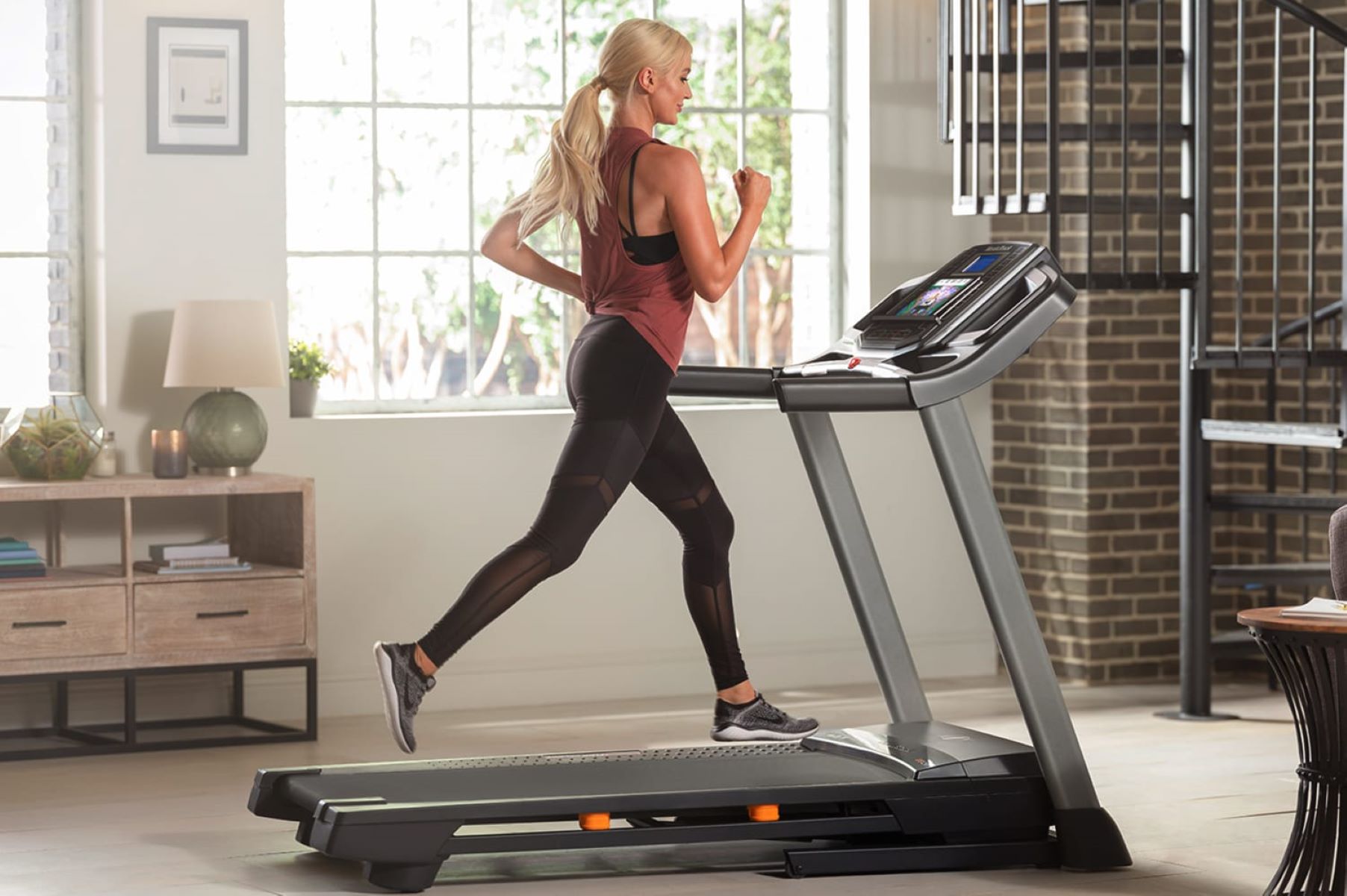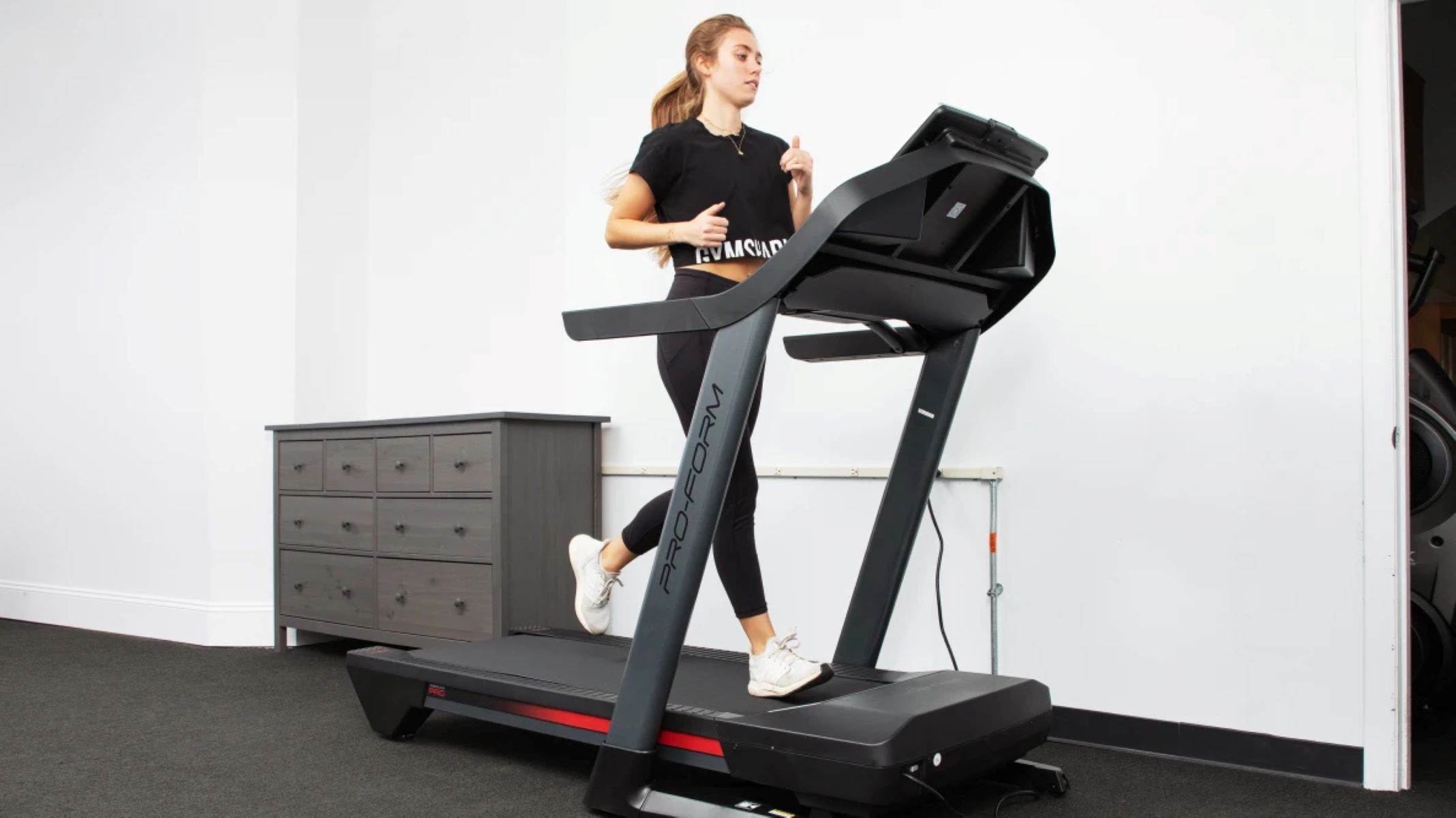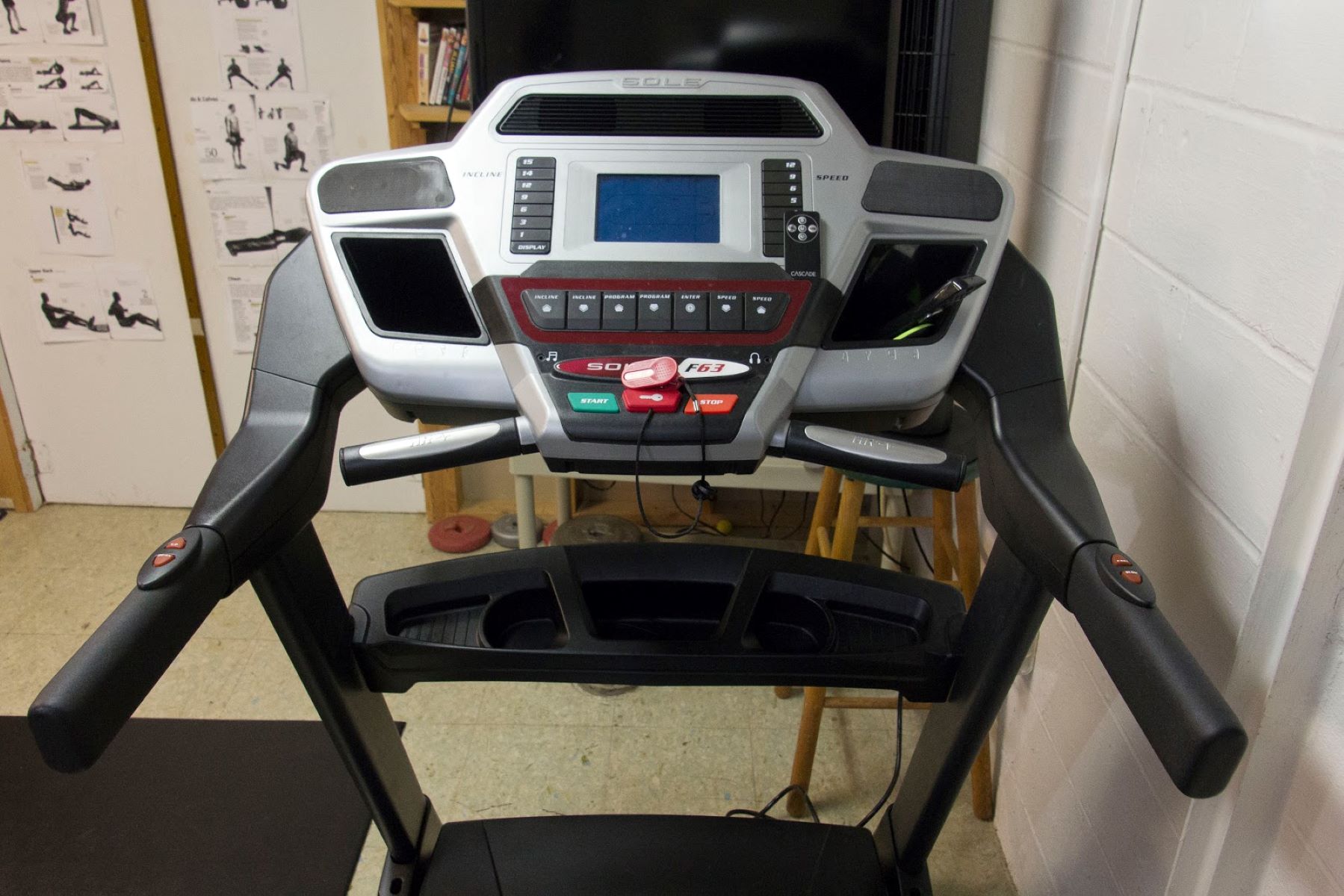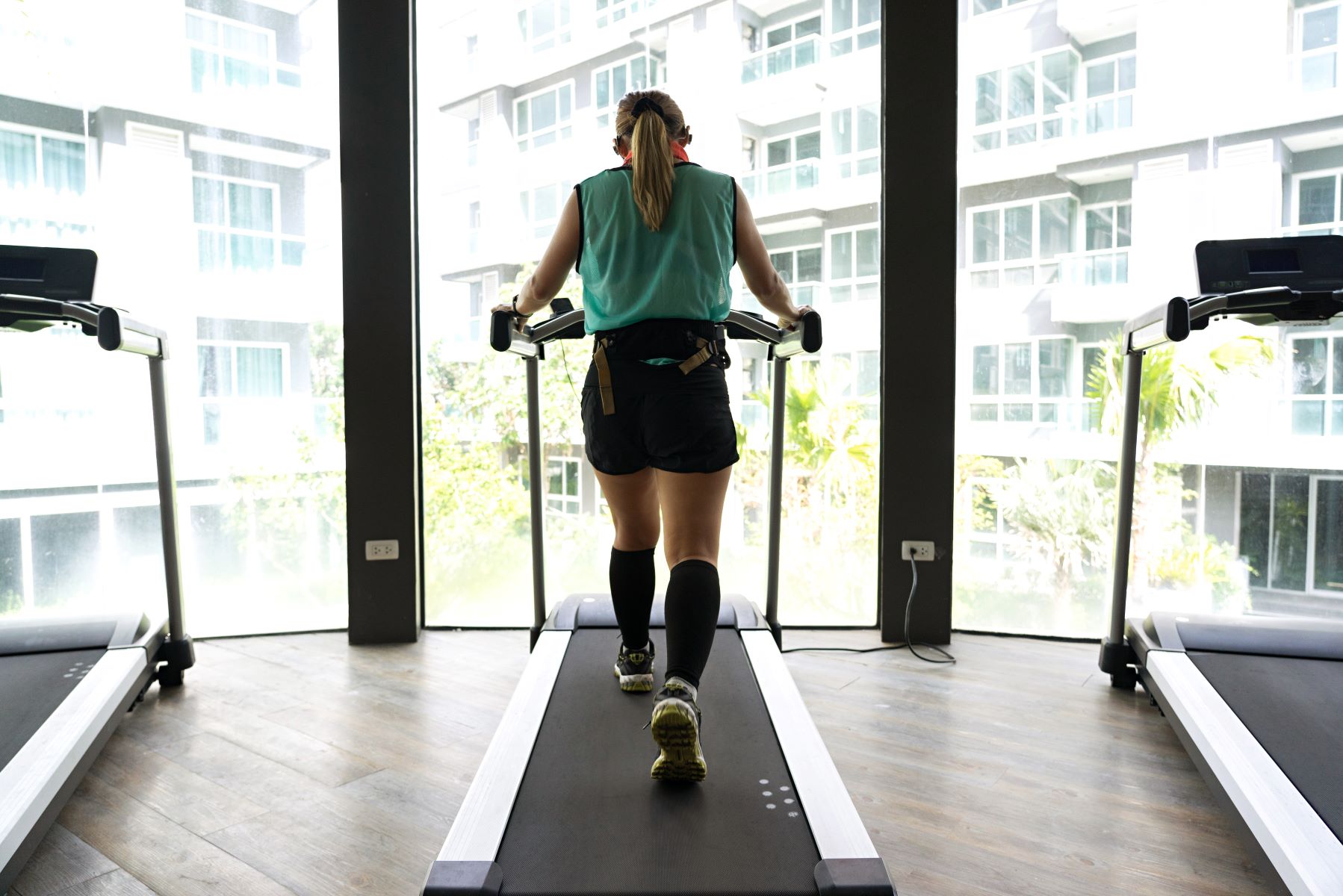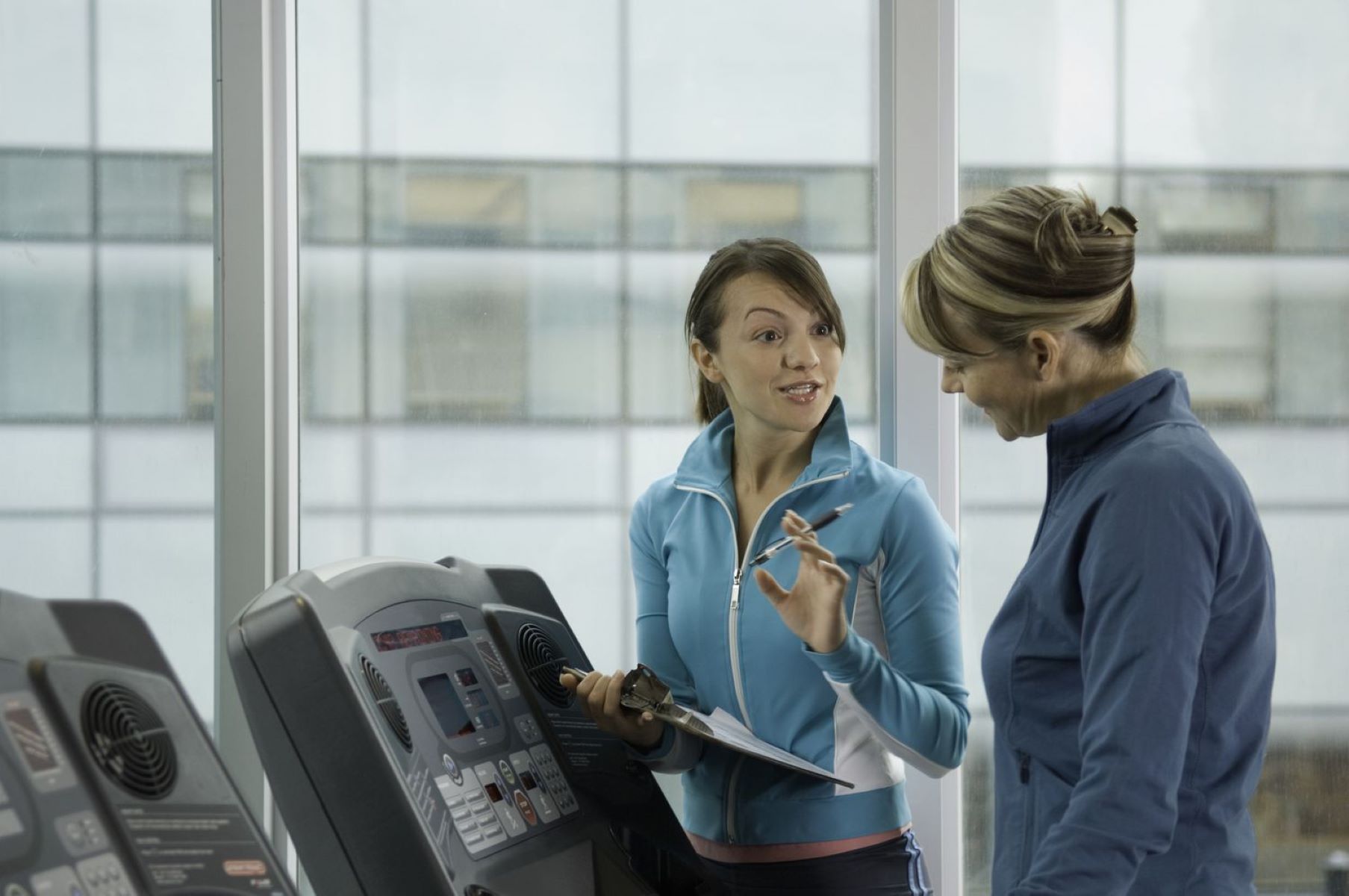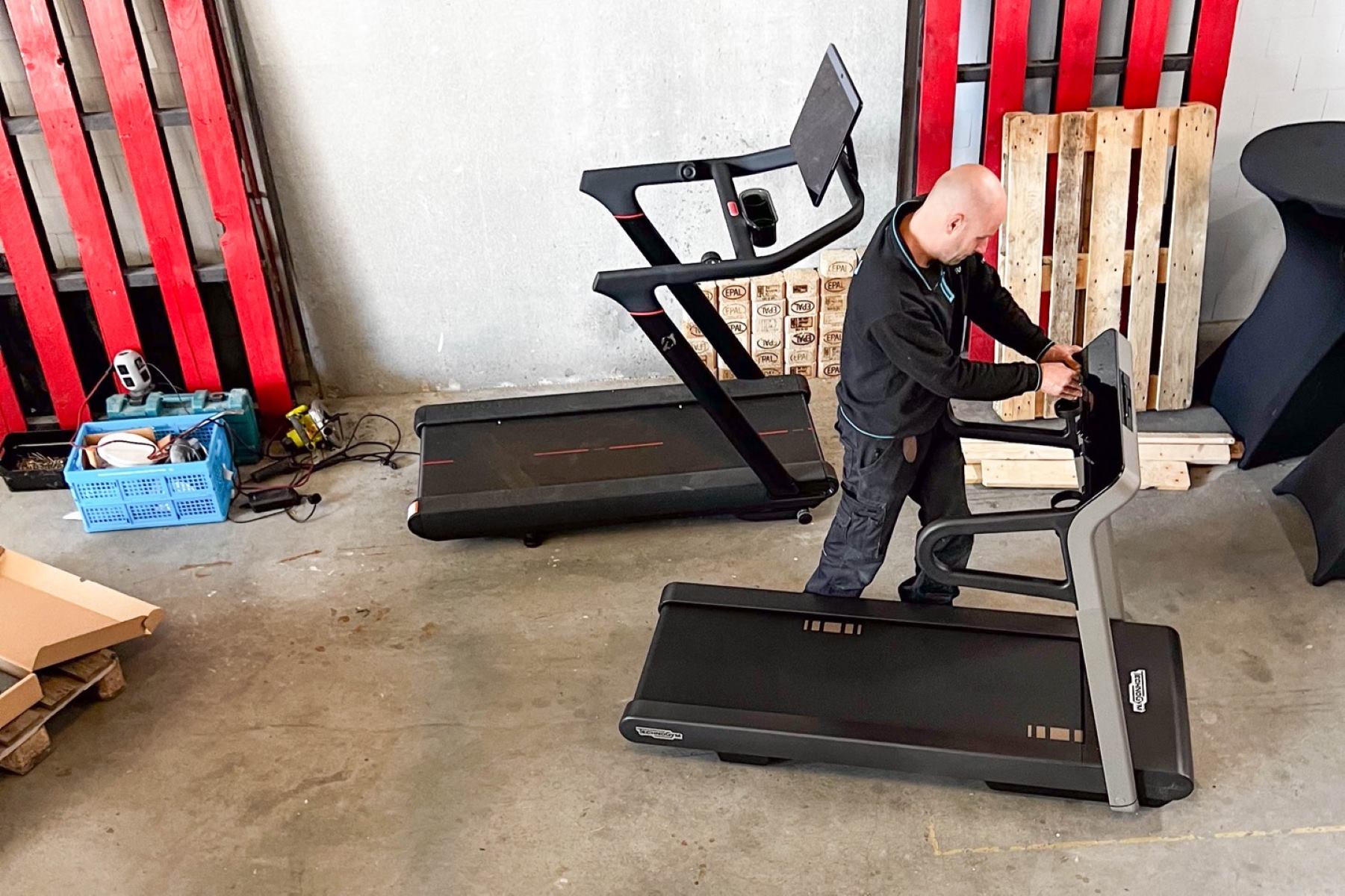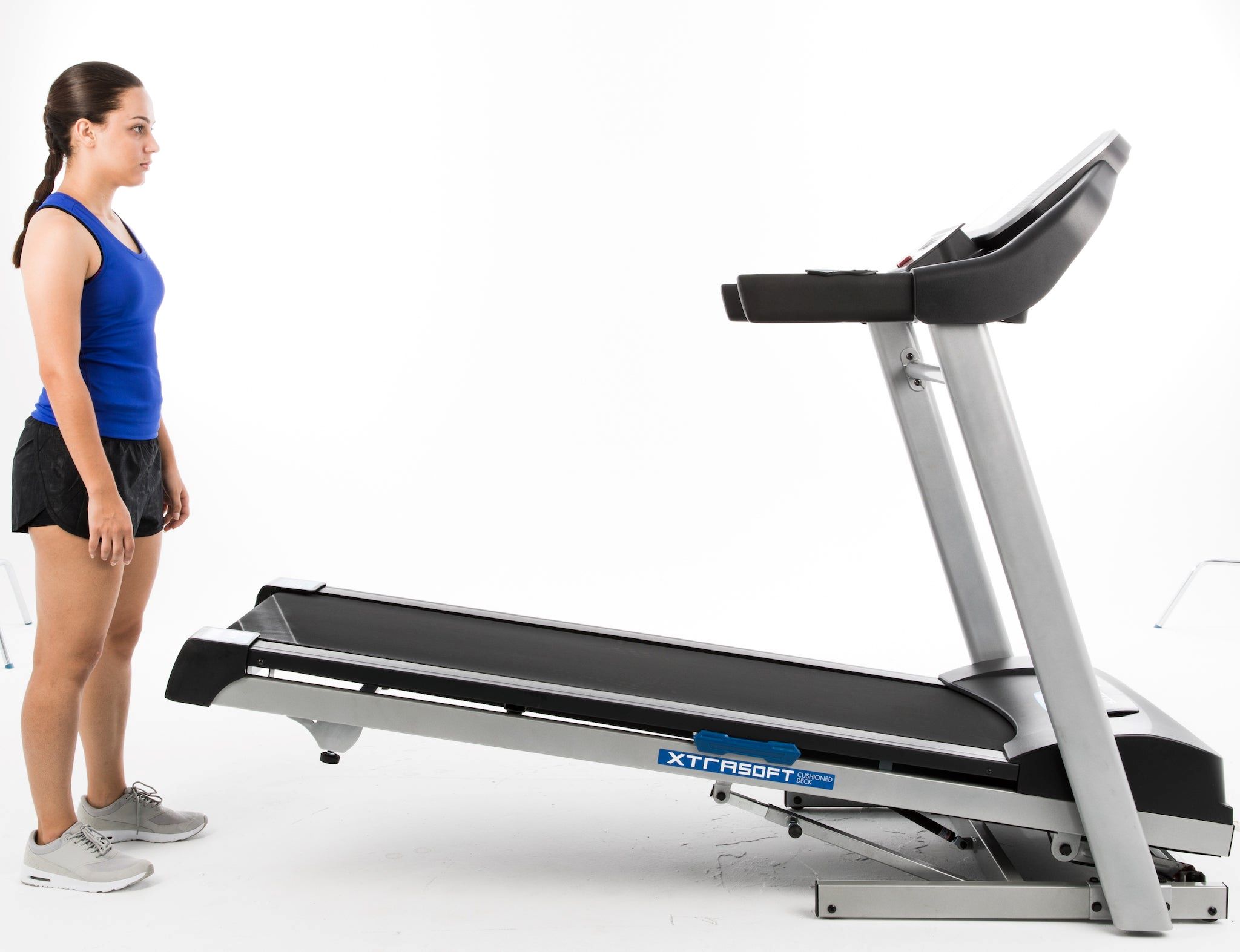

Brands
How To Turn On A Xterra Treadmill
Modified: October 25, 2023
Learn how to turn on your Xterra treadmill with these easy steps. Discover the top brands for treadmills and get started on your fitness journey today.
Introduction
Welcome to the world of Xterra Treadmills, where fitness meets convenience and performance. Whether you are a fitness enthusiast, a casual runner, or someone looking to kickstart their fitness journey, the Xterra Treadmill is a perfect companion to help you achieve your fitness goals from the comfort of your own home. With its sleek design, easy-to-use interface, and advanced features, the Xterra Treadmill provides an immersive and challenging workout experience.
In this article, we will guide you through the process of turning on your Xterra Treadmill and getting started with your workout. We’ll cover various features and functions, such as manual mode, pre-programmed workouts, customizing workouts, adjusting speed and resistance, monitoring heart rate, using the music player, cooling down, and stopping the treadmill. Additionally, we will provide you with some maintenance and care tips to ensure the longevity of your treadmill.
Whether you are a beginner or an experienced runner, using the Xterra Treadmill is a breeze. With its user-friendly interface and intuitive controls, you can easily tailor your workouts to your fitness level and goals. So, let’s dive into the details and discover how you can make the most of your Xterra Treadmill.
Safety Precautions
Prior to using your Xterra Treadmill, it’s important to familiarize yourself with the following safety precautions to ensure a safe and enjoyable workout experience:
- Read the user manual: Before using the treadmill, thoroughly read the user manual provided by Xterra. This will help you understand the proper operation and safety guidelines specific to your model.
- Clear the area: Ensure there is ample space around the treadmill, free from any obstacles or tripping hazards. Ideally, there should be a minimum clearance of three feet on each side and behind the treadmill.
- Use stable footwear: Wear appropriate athletic shoes while using the treadmill to maintain stability and prevent slipping.
- Warm-up and cool-down: Always start your workout with a proper warm-up session and end with a cool-down. This helps prevent injuries and allows your body to gradually adjust to the workout intensity.
- Stay hydrated: Have a water bottle within reach during your workouts and take regular sips to stay hydrated.
- Use the safety key: Attach the safety key to your clothing and secure it onto the console. This ensures that the treadmill will stop immediately if you accidentally fall or lose your balance.
- Start slowly: Begin your workout at a slow pace and gradually increase the intensity. Sudden changes in speed or incline can strain your muscles and increase the risk of injury.
- Monitor your heart rate: If your treadmill is equipped with heart rate monitoring features, use them to stay within your target heart rate zone and avoid overexertion.
- Keep children and pets away: Ensure that children and pets are kept at a safe distance from the treadmill during your workout to prevent accidents.
- Regular maintenance: Follow the manufacturer’s guidelines for regular maintenance and inspection of your treadmill to keep it in optimal working condition.
By following these safety precautions, you can create a safe environment for your workouts and minimize the risk of any accidents or injuries. Now that we’ve covered the safety aspects, let’s move on to powering on your Xterra Treadmill and getting started with your workout.
Powering On the Xterra Treadmill
Before you can start your workout, you need to power on your Xterra Treadmill. Follow these steps to get started:
- Locate the power switch: The power switch is usually located near the front of the treadmill, either on the console or on the side. It is typically labeled “On/Off” or indicated by a power icon.
- Connect the power cord: Plug one end of the power cord into the treadmill and the other end into a wall outlet. Ensure that the outlet is grounded and can handle the power requirements of the treadmill.
- Check the safety key: Ensure that the safety key is securely attached to the console. The treadmill will not power on without the safety key properly in place.
- Turn on the treadmill: Once the power switch is located, flip it to the “On” position. You may see a small indicator light or the console will illuminate, indicating that the treadmill is powered on.
- Wait for initialization: Some models may require a brief period of initialization. This process ensures that the treadmill is ready for operation. It may display a welcome message or progress bar on the console.
Once the treadmill is powered on and ready, you can proceed to select your desired workout mode and customize your settings. The specific controls and options may vary depending on the model of your Xterra Treadmill, but the user-friendly interface and intuitive design make it simple to navigate.
Now that the treadmill is powered on, it’s time to explore the different workout modes and features that the Xterra Treadmill has to offer. In the next sections, we will cover manual mode, pre-programmed workouts, customizing workouts, adjusting speed and resistance, monitoring heart rate, using the music player, cooling down, and stopping the treadmill.
Manual Mode
Manual mode is a great option if you prefer to have complete control over your workout. It allows you to manually adjust the speed and incline of the treadmill to suit your desired intensity and challenge level. To use manual mode on your Xterra Treadmill, follow these steps:
- Choose the manual mode option: On the treadmill console, look for the mode selection button or menu. Select the option that corresponds to manual mode.
- Set your desired speed: Use the speed buttons or up/down arrows on the console to adjust the speed of the treadmill. Start with a comfortable pace and gradually increase or decrease as needed.
- Adjust the incline: If you want to add an incline to your workout, find the incline buttons or controls on the console. Use the up/down arrows to increase or decrease the incline level.
- Monitor your progress: The console typically displays information such as distance, time, speed, and calories burned. Keep an eye on these metrics to track your progress and adjust your workout accordingly.
- Listen to your body: Pay attention to how your body feels during the workout. If you need to slow down or take a break, adjust the speed or incline accordingly.
- Experiment with different settings: Manual mode gives you the freedom to experiment with various speed and incline combinations. It allows you to customize your workout experience based on your preferences and fitness goals.
Using manual mode on your Xterra Treadmill provides a versatile and personalized workout experience. You have the freedom to adjust the intensity and challenge level as you see fit. Whether you’re aiming for a leisurely jog or an intense sprint, manual mode allows you to tailor your workout to your specific needs.
Now that you know how to use manual mode, let’s explore the other workout options available on your Xterra Treadmill, including pre-programmed workouts and how to customize them to suit your fitness goals.
Pre-programmed Workouts
The Xterra Treadmill comes with a variety of pre-programmed workouts that are designed to provide a diverse and challenging workout experience. These workouts are tailored to target specific goals such as fat burning, cardio endurance, interval training, and more. Here’s how you can access and use the pre-programmed workouts:
- Select the Program button: On the treadmill console, look for a Program or Workout button. Press this button to access the pre-programmed workout options.
- Browse the available workouts: The console will display a list of available programs. Use the up/down arrows or numeric keypad to scroll through the options and select the program that suits your desired workout goal.
- Choose your program and start: Once you’ve selected a program, press the Start button to begin your workout. The treadmill will automatically adjust the speed and incline settings according to the pre-set program’s parameters.
- Monitor your progress: Throughout the workout, the console will display key metrics such as time, distance, incline level, and calories burned. This allows you to track your progress and stay motivated.
- Pause or stop the program: If you need to pause the workout or stop it altogether, most treadmills have dedicated buttons for Pause/Stop. Press the appropriate button to pause the program temporarily or stop it completely.
- Adjusting program settings: Some pre-programmed workouts allow you to customize certain settings such as duration, intensity, or target heart rate. Consult your treadmill’s user manual to learn how to adjust these program settings according to your preference.
Pre-programmed workouts are a great option if you want a guided and structured workout without having to manually adjust the speed and incline settings. They offer a range of challenges and variety to keep your workouts interesting and effective.
Now that you’re familiar with pre-programmed workouts, let’s explore how you can customize your workouts on the Xterra Treadmill to suit your individual fitness preferences.
Customizing Workouts
The Xterra Treadmill provides the flexibility to customize your workouts based on your fitness goals and preferences. Whether you want to focus on endurance, speed, or specific target areas, customizing your workouts allows you to tailor the intensity and duration to suit your individual needs. Here’s how you can customize your workouts on the Xterra Treadmill:
- Adjust speed and incline: During a manual workout or even while using pre-programmed workouts, you can manually adjust the speed and incline settings to match your desired intensity. Use the speed control buttons or incline buttons on the console to make these adjustments.
- Set up intervals: Interval training is an effective way to challenge your body and improve overall fitness. Most Xterra Treadmills offer an interval training feature that allows you to alternate between high-intensity bursts and recovery periods. Consult your user manual to learn how to set up intervals on your specific model.
- Create custom programs: Many Xterra Treadmills have the option to create custom programs where you can set specific time, speed, and incline values. This gives you the freedom to design workouts that match your fitness goals and progress at your own pace.
- Utilize heart rate monitoring: If your treadmill is equipped with heart rate monitoring features, you can use this data to customize your workouts. Set target heart rate zones to ensure that you are exercising in your desired intensity range and adjust speed or incline accordingly to maintain or reach the target heart rate.
- Experiment with different settings: Don’t be afraid to try different speed and incline combinations during your workouts. This allows you to challenge your body in different ways and keep your routine engaging and effective.
- Track your progress: Many Xterra Treadmills offer workout tracking features that allow you to store and review your past workouts. This enables you to monitor your progress over time and make adjustments to your customized workouts as needed.
Remember, when customizing your workouts, it’s important to listen to your body and gradually increase the intensity over time. Pay attention to any signs of discomfort or excessive fatigue and make adjustments accordingly. By customizing your workouts on the Xterra Treadmill, you can create a fitness regimen that suits your specific needs and helps you achieve your goals.
Now that you’re familiar with customizing your workouts, let’s explore some of the additional features that the Xterra Treadmill offers, such as the incline function and adjusting speed and resistance.
Using the Incline Function
The incline function on the Xterra Treadmill allows you to simulate running or walking uphill, adding an extra challenge and intensity to your workout. By adjusting the incline level, you can target different muscle groups, increase calorie burn, and build endurance. Here’s how you can use the incline function on your Xterra Treadmill:
- Locate the incline controls: Look for the incline buttons or controls on the treadmill console. These buttons are typically labeled with arrows indicating incline up and incline down.
- Adjust the incline level: Press the incline up button to increase the incline or the incline down button to decrease it. Most treadmills offer a range of incline levels, allowing you to gradually increase the intensity as you progress.
- Choose a target incline: Depending on your fitness goals and the desired intensity of your workout, select a target incline level. If you’re new to incline training, start with a slight incline (around 1-2%) and gradually increase it over time.
- Monitor your form: When using the incline function, pay attention to your form. Keep your posture upright, engage your core, and avoid leaning on the console or handles for support.
- Alternate flat and incline intervals: To add variation to your workout, you can incorporate flat intervals with incline intervals. For example, you can alternate between running on a flat surface and running at an incline for a certain duration or distance.
- Gradually increase the incline: As you get more comfortable with incline training, gradually increase the incline level to challenge your muscles and improve your cardiovascular endurance. Aim for a variety of incline levels in your workouts to target different muscle groups.
Using the incline function on your Xterra Treadmill adds versatility to your workouts and helps you push yourself further. It simulates different terrains and engages different muscle groups, providing a more comprehensive and effective workout experience.
Now that you know how to use the incline function, let’s move on to adjusting the speed and resistance on your Xterra Treadmill to customize your workouts even further.
Adjusting Speed and Resistance
The ability to adjust speed and resistance on your Xterra Treadmill allows you to control the intensity of your workouts and tailor them to your fitness level and goals. Whether you want to increase your running speed, challenge yourself with sprints, or add resistance for a more demanding workout, here’s how you can adjust these settings:
- Locate the speed and resistance controls: Look for the speed and resistance buttons or controls on the treadmill console. These buttons are typically labeled with arrows indicating speed up, speed down, resistance up, and resistance down.
- Adjust the speed: Press the speed up button to increase the speed or the speed down button to decrease it. Most treadmills offer a range of speed options, allowing you to gradually increase your running or walking pace.
- Choose a target speed: Depending on your fitness goals and the type of workout you want to perform, select a target speed that challenges you but is still within your capability. Start with a comfortable speed and increase it as you become more comfortable and confident.
- Change resistance levels: If your Xterra Treadmill features adjustable resistance, you can increase or decrease the level of resistance to make your workout more challenging. This is especially beneficial for those looking to build strength and endurance.
- Experiment with interval training: Adjusting speed and resistance opens up the opportunity for interval training. Intervals involve alternating between high-intensity periods and recovery periods. For example, you can sprint at a higher speed or increase the resistance for a specific duration, followed by a slower pace or lower resistance for recovery.
- Listen to your body: It’s important to listen to your body and adjust the speed and resistance settings accordingly. If you find that the intensity is too high or too low, make the necessary adjustments to ensure a safe and effective workout.
By adjusting speed and resistance, you can create a varied and challenging workout routine that targets different muscle groups and improves cardiovascular fitness.
Now that you know how to adjust speed and resistance, let’s explore how to monitor your heart rate during your workouts on the Xterra Treadmill.
Monitoring Heart Rate
Monitoring your heart rate during workouts is a valuable tool in ensuring that you’re exercising at the right intensity level and getting the most out of your workouts. Your Xterra Treadmill may have built-in heart rate monitoring features or be compatible with external heart rate monitors. Here’s how you can monitor your heart rate while using your Xterra Treadmill:
- Use built-in heart rate sensors: If your treadmill has built-in heart rate sensors, they are typically located on the handles or console. Place your hands on the sensors or grab the designated heart rate handlebars while working out to get a reading. Ensure your hands are clean and dry for accurate readings.
- Wear a chest strap monitor: Some Xterra Treadmills are compatible with chest strap heart rate monitors. Strap the monitor around your chest, ensuring it fits snugly but comfortably. Follow the instructions provided by the manufacturer to pair it with your treadmill’s console.
- Sync with a wireless heart rate monitor: Certain Xterra Treadmills allow you to sync with wireless heart rate monitors. These monitors typically use Bluetooth or ANT+ technology to connect with the treadmill. Follow the setup instructions provided by the manufacturer for a seamless connection.
- Monitor your heart rate on the console: Once your heart rate monitor is connected, your treadmill’s console will display your heart rate in real-time. You can track how your heart rate varies throughout your workout and make adjustments to your speed and intensity accordingly.
- Utilize heart rate zone training: Heart rate zones can help you optimize your workouts. Based on your fitness goals, determine your target heart rate zones (such as fat-burning or cardio) and adjust your speed, incline, or resistance to stay within those zones during your workouts. Consult resources or consult a fitness professional to learn more about your target heart rate zones.
- Pay attention to how you feel: While heart rate monitoring is helpful, it’s also essential to listen to your body. If your heart rate is higher than desired or you experience any discomfort or fatigue, scale back the intensity of your workout or take a break.
Monitoring your heart rate allows you to gauge the intensity of your workouts and ensure you’re working in a safe and effective range. It’s a valuable tool for tracking your cardiovascular fitness progress and reaching your fitness goals.
Now that you know how to monitor your heart rate, let’s explore the additional features that the Xterra Treadmill may offer, such as the music player to keep you motivated during your workouts.
Using the Music Player
The Xterra Treadmill comes equipped with a music player feature that allows you to listen to your favorite tunes while working out. Listening to music can enhance your exercise experience by keeping you motivated, improving your mood, and even helping you maintain a steady rhythm. Here’s how you can use the music player on your Xterra Treadmill:
- Connect your device: Most Xterra Treadmills offer options to connect your music device, such as a smartphone or MP3 player, through either Bluetooth or an auxiliary cable. Consult your treadmill’s user manual to understand the specific connectivity options available.
- Select your desired music: Use the treadmill’s console to navigate through your music library, playlist, or streaming app on your connected device. You can usually use the treadmill’s controls to browse, play, and pause your music.
- Use built-in speakers or headphones: Depending on your treadmill model, you can either listen to your music through the treadmill’s built-in speakers or by connecting headphones. Choose the option that suits your preference and workout environment.
- Adjust the volume: While playing your music, use the treadmill’s console or designated volume controls to adjust the audio volume to your liking. Make sure the volume level is at a comfortable level that allows you to enjoy your music and still be aware of your surroundings.
- Create a workout playlist: Consider creating a dedicated workout playlist that features energizing and motivating songs to keep you motivated during your workouts. Upbeat and uplifting tunes can help you maintain a positive mindset and push harder through challenging moments.
- Keep safety in mind: If you’re using headphones, remember to keep the volume at a reasonable level so that you can still hear external sounds, such as warning beeps or calls for attention. Ensure that you can stay aware of your surroundings and take necessary precautions.
The music player feature on your Xterra Treadmill adds an extra element of enjoyment to your workouts. It can help you stay focused, motivated, and engaged, making your treadmill sessions more enjoyable.
Now that you know how to use the music player, let’s move on to cooling down and stopping the treadmill after your workout.
Cooling Down and Stopping the Treadmill
After completing your workout on the Xterra Treadmill, it’s important to properly cool down your body and safely stop the treadmill. Cooling down allows your heart rate and body temperature to gradually return to normal levels, reducing the risk of dizziness or potential muscle soreness. Here’s how to cool down and stop the treadmill effectively:
- Slow down gradually: As you near the end of your workout, gradually decrease the speed and incline of the treadmill. Gradual reduction helps your body transition from a higher intensity level to a resting state.
- Resume a slower pace: Once you’ve decreased the speed and incline, continue walking or jogging at a slower pace for a few minutes. This helps your muscles gradually recover and prevents blood from pooling in your legs.
- Stretch: After slowing down, spend a few minutes performing gentle stretches that target the major muscle groups you engaged during your workout. Focus on areas such as your legs, hips, and upper body. Stretching helps improve flexibility, reduce muscle tension, and promote recovery.
- Hydrate: Throughout your cool-down, continue to hydrate by sipping water. Replacing fluids lost during your workout helps prevent dehydration and supports your body’s recovery.
- Press the Stop button: Once you’ve completed your cool-down, locate the Stop button on the treadmill console. Press the button to stop the treadmill completely. This ensures that the belt comes to a halt, removing any risk of injury.
- Carefully dismount the treadmill: Once the treadmill has stopped, carefully step off the machine, using the handrails for support if needed. Take your time to ensure balance and stability before fully stepping off the treadmill.
- Give the treadmill a rest: After your workout, allow the treadmill to cool down before storing or using it again. This gives the internal components a chance to cool down and prevents excessive wear and tear.
Cooling down properly and safely stopping the treadmill are essential in completing your workout routine on a positive note. Not only does it aid in your body’s recovery, but it also helps prevent any accidents or injuries.
Now that you know how to cool down and stop the treadmill, let’s move on to some maintenance and care tips to keep your Xterra Treadmill in optimal condition.
Maintenance and Care Tips
Proper maintenance and care are key to ensuring the longevity and optimal performance of your Xterra Treadmill. By following these maintenance tips, you can keep your treadmill in top shape and enjoy many workouts to come:
- Read the user manual: Familiarize yourself with the specific maintenance instructions provided by Xterra in the user manual. Each treadmill model may have unique maintenance requirements.
- Keep it clean: Regularly clean the surface of your treadmill, including the console, handrails, and belt. Use a soft, damp cloth to wipe away any dust, sweat, or debris. Avoid using harsh cleaning agents that can damage the equipment.
- Tighten loose parts: Periodically check for any loose screws or bolts on your treadmill. Gently tighten them if needed, but be careful not to overtighten as this can cause damage.
- Lubricate the belt: Consult your user manual to determine if your treadmill requires belt lubrication. If so, apply a silicone-based treadmill lubricant according to the manufacturer’s instructions. This helps reduce friction and prolongs the life of the belt.
- Inspect the belt: Regularly inspect the treadmill belt for any signs of wear or fraying. If you notice any issues with the belt, such as uneven wear or excessive looseness, contact Xterra for assistance or consult a professional technician.
- Check and adjust the alignment: Ensure that the treadmill belt is properly aligned and centered. If you notice any misalignment, consult the user manual for instructions on adjusting the belt tension or seek professional assistance.
- Avoid excessive moisture: Keep your treadmill in a dry and well-ventilated area to prevent moisture buildup. Avoid placing the treadmill near windows, humidifiers, or areas prone to high humidity.
- Protect the electronics: If you use the treadmill outdoors or in a garage, take precautions to protect the console and other sensitive electronic components from extreme temperatures or moisture.
- Regularly inspect and clean the motor area: Remove the motor cover and inspect the motor area for any debris or dust accumulation. Use a vacuum or a soft brush to gently remove any particles that may affect the motor’s performance.
- Follow maintenance schedules: Adhere to the recommended maintenance schedules provided by Xterra. This may include tasks such as belt tightening, motor inspections, or software updates. Performing regular maintenance ensures optimal performance and extends the lifespan of your treadmill.
By following these maintenance and care tips, you can keep your Xterra Treadmill in excellent condition for years to come. Regular cleaning, proper lubrication, and routine inspections will help you get the most out of your treadmill and maintain its functionality.
Now that you’re equipped with maintenance tips for your treadmill, let’s move on to troubleshooting common issues that you may encounter with your Xterra Treadmill.
Troubleshooting Common Issues
While the Xterra Treadmill is designed to provide a reliable and smooth workout experience, there may be times when you encounter common issues. Here are some troubleshooting tips for addressing these issues:
- Treadmill won’t turn on: If your treadmill isn’t powering on, double-check that it’s properly plugged into a working electrical outlet. Ensure that the safety key is securely attached, as the treadmill will not turn on without it. If the issue persists, check the circuit breaker or contact Xterra’s customer support for further assistance.
- Inaccurate speed or distance readings: If you notice discrepancies in speed or distance readings, check if the treadmill belt is properly calibrated. Refer to your user manual for instructions on calibrating the belt or seek professional assistance if needed.
- Noisy operation: If your treadmill is making unusual noises, such as squeaking or grinding, it may be due to loose or worn parts. Tighten any loose screws and lubricate the belt as recommended. If the noise persists, consult Xterra’s customer support or a technician for further evaluation.
- Console display issues: If the console display is not functioning properly, check that the cables connecting the console to the internal components are securely connected. If the issue persists, contact Xterra’s customer support for troubleshooting and potential repair options.
- Uneven belt movement: If you notice that the treadmill belt is slipping to one side or moving unevenly, it may be a sign of misalignment. Refer to your user manual for instructions on adjusting the belt tension and alignment, or seek professional assistance if needed.
- Heart rate monitor not working: If your heart rate monitor is not providing accurate readings, ensure that the contacts on the handles or chest strap are clean and free from sweat or debris. It’s also worth checking the battery level or making sure that the chest strap is properly secured around your chest.
- If you encounter any other issues not mentioned here, consult your user manual for troubleshooting tips specific to your model. You can also reach out to Xterra’s customer support for further assistance or contact a professional technician for repairs.
Remember, it’s essential to follow safety precautions and consult the user manual or seek professional assistance for complex issues or repairs. Addressing common issues promptly can help you get back to enjoying your workouts on the Xterra Treadmill with minimal downtime.
Now that we’ve covered troubleshooting tips, let’s wrap up by summarizing what we’ve discussed in this article.
Conclusion
Using the Xterra Treadmill provides a convenient and effective way to stay fit and active from the comfort of your own home. Whether you’re a beginner or an experienced runner, the Xterra Treadmill offers a range of features and customization options to suit your fitness goals and preferences.
In this article, we explored how to power on the treadmill and navigate through manual mode, pre-programmed workouts, and customization options. We discussed the importance of safety precautions and proper maintenance to ensure a safe and long-lasting treadmill experience. You also learned how to utilize the incline function, adjust speed and resistance, monitor your heart rate, and enjoy your favorite music while working out.
Remember to always prioritize safety by following the recommended guidelines, warming up before each session, and cooling down properly afterwards. By gradually increasing the intensity of your workouts and listening to your body, you can achieve your fitness goals effectively and without overexertion.
Additionally, regular maintenance, including cleaning, lubrication, and inspection, will help prolong the lifespan of your Xterra Treadmill and ensure its optimal performance. Troubleshooting common issues and seeking professional assistance if needed can address any concerns or problems along the way.
Now that you have the knowledge and tools to make the most of your Xterra Treadmill, it’s time to lace up your shoes, press the power button, and embark on your fitness journey. Enjoy the convenience, versatility, and challenge that the Xterra Treadmill brings to your home workouts!
